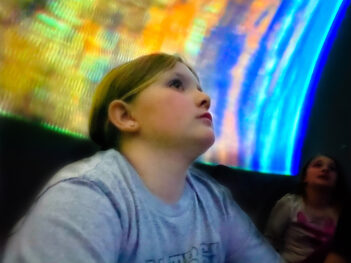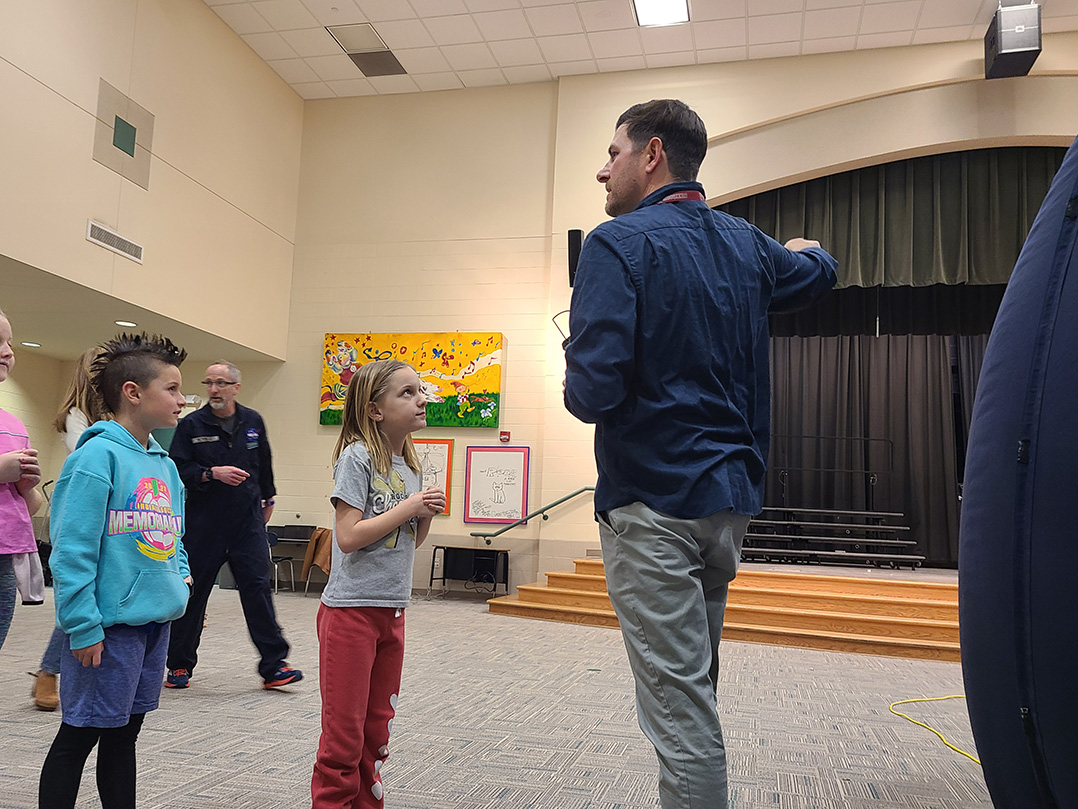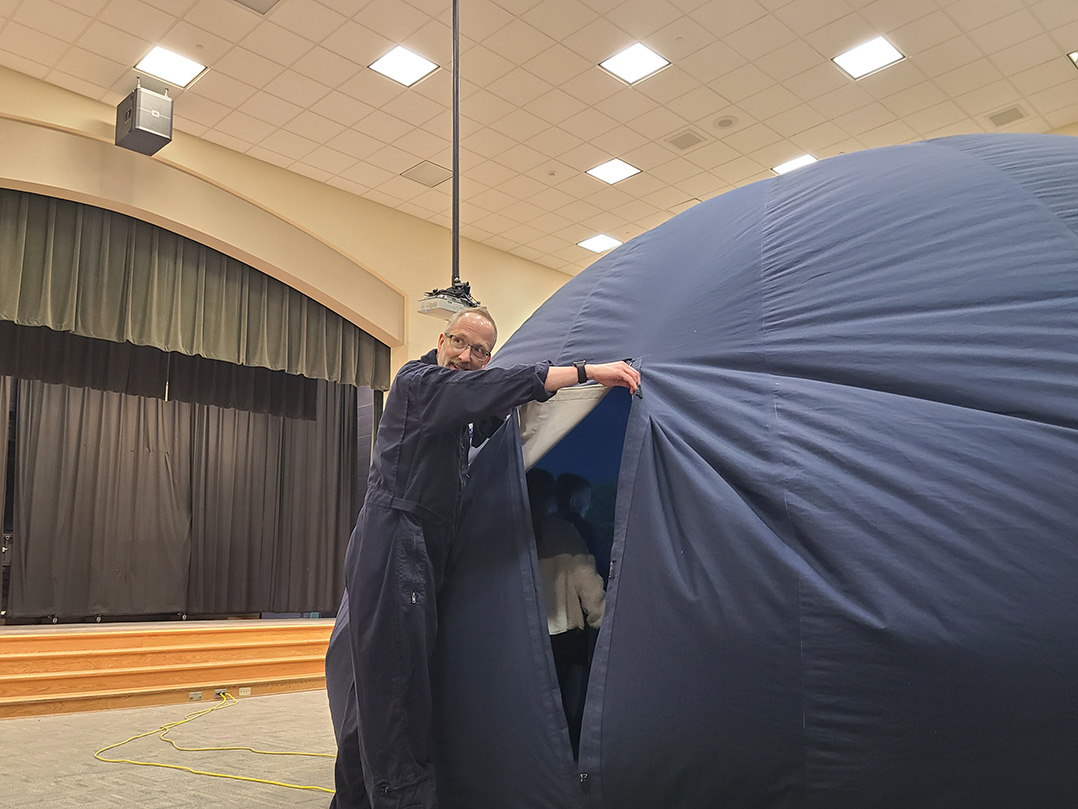If Westfield residents want to know more about space and our solar system, they’re likely to find answers from students at Oak Trace Elementary School, who received a lesson that was out of this world.
The elementary school recently hosted an inflatable, portable planetarium known as a StarLab that was designed to give students an in-depth understanding of planets, stars and the solar system, said Jeff Gibbs, a science, technology, engineering and math – or STEM – teacher at Oak Trace who teaches kindergarten through fourth grade.
Gibbs said the planetarium provides students the opportunity to learn in a different setting.

“It’s a great way to add something that’s immersive and they can come in and check out space in a way they might not be able to see in any other way,” Gibbs said.
Gibbs said he uses the experience as a way to connect educational standards for students, which include having first-grade students learn about how the sun travels throughout the day and how it changes throughout the year. Inside the planetarium, students can either sit or lay back within the inflatable planetarium as teachers control what students see around them.
“What’s nice about this is that you can speed it up a month at a time to see that more, and this way, you can speed it and say, ‘This is how high it is up in June,’” Gibbs said. “It’s a quick, easy way to do that and that feel like they’re in (space).”
The planetarium was purchased with grant funding provided by the Central Indiana Educational Service Center and rotates to different elementary schools throughout the year, said Christian Horner, a technology integration specialist with Westfield Washington Schools. It also gives the 585 students enrolled at Oak Trace an opportunity to participate in STEM learning, which is one of five rotations they are involved in other than physical education, arts, the library and music, Principal Jane Hitch said.
Gibbs, who is in his 11th year with the district, said he prepared his students for their experience in the inflatable planetarium in advance by telling them what they could expect to see while seeing it in books as well. About 10 to 15 adults can fit in the planetarium, while a classroom full of students can also be accommodated, he added.
“It gives us another tool to get kids thinking about things in a different way,” Gibbs said.
Gibbs’ recent lesson for his students involved a virtual field trip of the solar system that took them to a planet, which gave Gibbs an opportunity to explain details of the planet, in addition to constellations and patterns that students might see in the sky.
“It does a great job of (showing) pictures and imagery and points out things to them as well,” he said. “It touches on things in our science standards that have to do with space.”
Fourth-grade student Lucas Boyd embraced the experience.
“I enjoyed looking at the planets and constellations,” he said.
Boyd’s classmate, Brenner Kempf, said he was able to think about space differently while learning about the solar system and different aspects of constellations.
“This is really fun to do and most other schools don’t get to do this,” Kempf said.

Did you know?
- Saturn is the only planet in our solar system that is less dense than water.
- More than 1,300 Earths would fit into Jupiter’s vast sphere.
- Neptune’s winds are the fastest in the solar system, reaching 2,575 kilometers per hour (1,600 mph).
- The gravity on Mars is approximately one-third that on Earth.
- The average temperature on Venus is more than 480 degrees Celsius (about 900 degrees Fahrenheit).
Source: NASA



